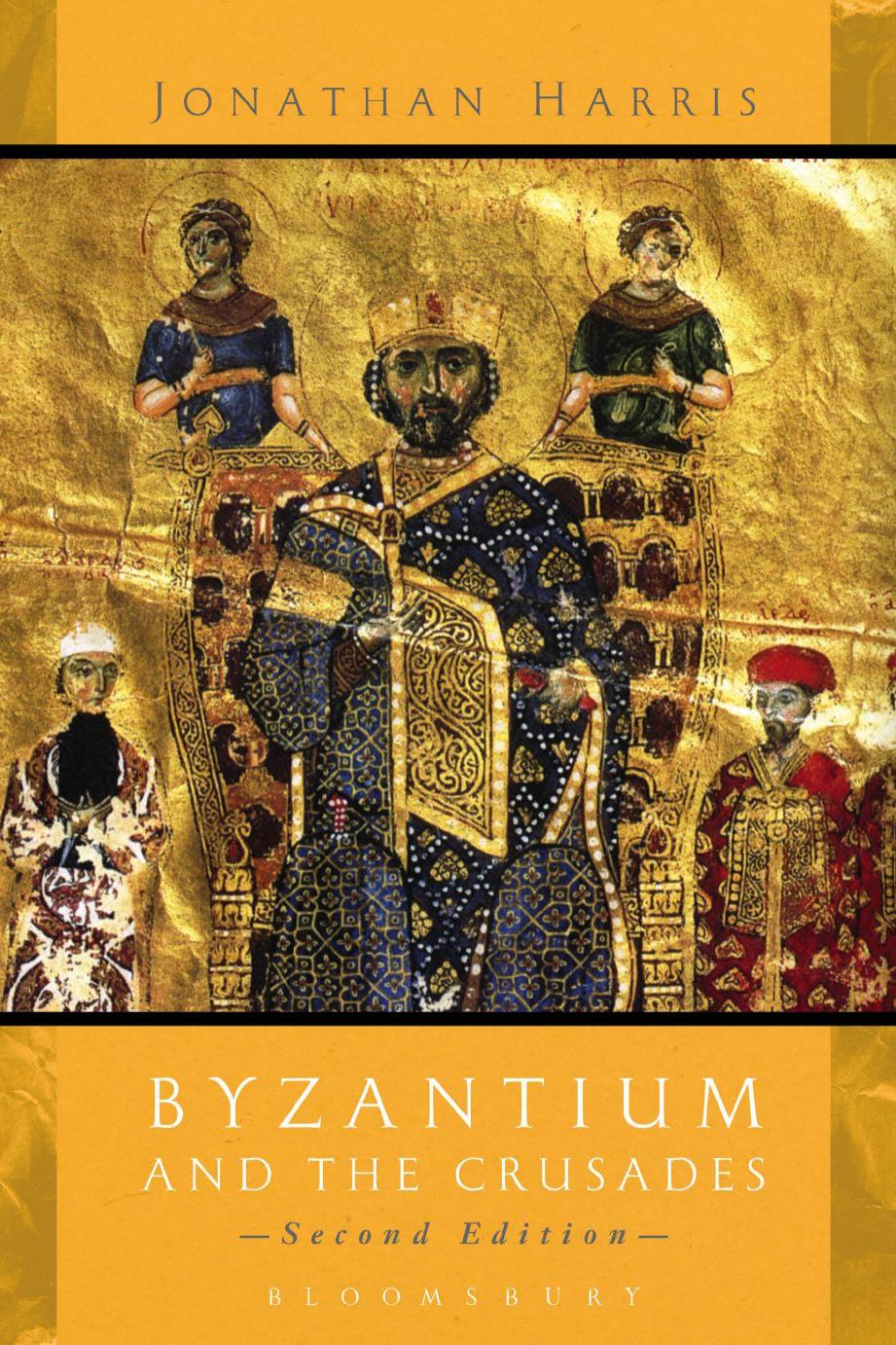Byzantium and the Crusades by Harris Jonathan

Author:Harris, Jonathan
Language: eng
Format: epub, pdf
ISBN: 9781780936710
Publisher: Bloomsbury UK
Published: 2014-08-23T16:00:00+00:00
8
Iron not gold
If the news of the massacre in Constantinople in 1182 was a shock to Western opinion, it was to be eclipsed five years later by a far worse calamity. In the summer of 1187 Saladin invaded the kingdom of Jerusalem with a force of 20,000 men and laid siege to Tiberias. The king of Jerusalem, Guy of Lusignan, hurried to the rescue and unwisely led his army into the arid lands to the west of the Sea of Galilee. When a battle was fought on 4 July on the slopes of the twin peaks known as the Horns of Hattin, the Christian army was suffering acutely from thirst and heat exhaustion and proved no match for Saladin’s troops. By the end of the day, not only had King Guy and most of his leading nobles been taken captive but a relic of the True Cross which had accompanied the Latin army into battle was also in Muslim hands. Reynald of Châtillon, the old adversary of Manuel I, was among the prisoners, but he was swiftly executed by Saladin himself. All the Templar and Hospitaller prisoners suffered the same fate at the hands of Sufi holy men. Having wiped out the main opposition, in the months that followed Saladin was able to capture the castles and towns whose garrisons had been with the Christian army at Hattin, including the ports of Acre and Ascalon. By September he had occupied the entire coast south of Tripoli and was ready to move against Jerusalem itself. After a short siege, the city surrendered on 2 October, bringing to an end the Latin occupation that had lasted for 88 years. While the principality of Antioch and the county of Tripoli still held out in the north, most of the kingdom of Jerusalem was now in Saladin’s hands, apart from the port of Tyre which was ably defended by Conrad of Montferrat, the brother of the ill-fated Renier.
The depth of the outrage and grief felt in western Europe can be gauged from the emotive language of the crusading bull Audita Tremendi, issued by Pope Gregory VIII on 29 October 1187 in response to the arrival of news of the defeat at Hattin. Gregory, much like Urban II before him, portrayed the Muslims as ‘savage barbarians thirsting after Christian blood’, but he did not place the whole blame on them. Rather the defeat was the result of the sinful lapses on the part of Christians, not just those living in the kingdom of Jerusalem but of all the faithful. The military response to Saladin’s victory, he urged, was to be accompanied by sincere repentance.1 There was, however, a body of opinion that placed the blame rather differently. According to the informant of the German monk, Magnus of Reichersberg, the fall of Jerusalem had been brought about by the new Byzantine emperor, Isaac II Angelos. Once he had overthrown Andronicus I, Isaac allegedly wished to have his elder brother Alexios with him in Constantinople. Alexios was,
Download
Byzantium and the Crusades by Harris Jonathan.pdf
This site does not store any files on its server. We only index and link to content provided by other sites. Please contact the content providers to delete copyright contents if any and email us, we'll remove relevant links or contents immediately.
| Bahrain | Egypt |
| Iran | Iraq |
| Israel & Palestine | Jordan |
| Kuwait | Lebanon |
| Oman | Qatar |
| Saudi Arabia | Syria |
| Turkey | United Arab Emirates |
| Yemen |
Empire of the Sikhs by Patwant Singh(23021)
The Wind in My Hair by Masih Alinejad(5056)
Rise and Kill First by Ronen Bergman(4739)
The Templars by Dan Jones(4656)
The Rape of Nanking by Iris Chang(4165)
12 Strong by Doug Stanton(3526)
Blood and Sand by Alex Von Tunzelmann(3164)
Babylon's Ark by Lawrence Anthony(2648)
The History of Jihad: From Muhammad to ISIS by Spencer Robert(2599)
No Room for Small Dreams by Shimon Peres(2343)
The Turkish Psychedelic Explosion by Daniel Spicer(2330)
Inside the Middle East by Avi Melamed(2325)
Gideon's Spies: The Secret History of the Mossad by Gordon Thomas(2319)
Arabs by Eugene Rogan(2279)
The First Muslim The Story of Muhammad by Lesley Hazleton(2245)
Come, Tell Me How You Live by Mallowan Agatha Christie(2228)
Bus on Jaffa Road by Mike Kelly(2123)
Kabul 1841-42: Battle Story by Edmund Yorke(2003)
1453 by Roger Crowley(1994)
